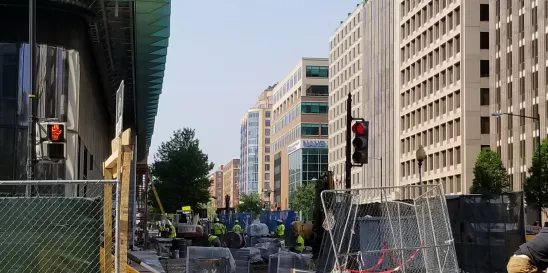These programs, some new and some “revamped,” aim to provide more affordable, energy-efficient, near-transit, eco-friendly projects, while working to combat the record-high vacancy rates in office and commercial buildings across the country and declining public transit ridership, both of which reached new heights during the pandemic.
The programs highlighted in the White House’s Fact Sheet include attractive funding opportunities for prospective developers and investors, as well as technological and process-driven assistance offerings. In an effort to inform both public and private developers, real estate investors, and owners of the financing opportunities available for qualifying commercial to residential conversions, the White House released the Commercial To Residential Federal Resources Guidebook. This guidebook summarizes over 20 federal programs across six general agencies, ranging from low-interest loans and grants to tax incentives. Notable programs include the US Department of Housing and Urban Development’s (HUD) Community Development Block Grant Program, which has already allocated $10 billion to support pre-development, acquisition, and rehabilitation costs for conversion projects.
It is no secret that the rise in office and commercial vacancies in downtown buildings across the country has strained the real estate markets, impacting communities and, consequently, public transportation numbers. For Metro in the Washington, DC, area, this factor, combined with increased use of ride-sharing apps, led to a record decline in ridership during the pandemic, which rebounded to only to 60-70% of pre-pandemic levels in November 2022. This decline in fare revenues, coupled with rises in labor costs due to inflation, has resulted in a budget shortfall of $750 million.
For the investor looking for low-cost debt opportunities, the US Department of Transportation (DOT) has implemented programs that collectively may offer more than $35 billion in financing to issue large-scale, below-market loans for qualifying projects near public transportation. Additionally, there’s a push for transit agencies and the US General Services Administration (GSA) to sell real property to local governments, as well as nonprofit and for-profit developers, to promote more conversions.
The programs announced in October seek to provide increased housing supply, while in turn lowering the cost of housing making it more affordable. To encourage action on these available programs, the DOT will be announcing new technical assistance programs that will connect interested persons with federal agencies, which will work to provide technical and financial advisory throughout the underwriting and conversion process.
Additionally, local governments are offering incentives to businesses that are willing to relocate to downtown areas. In the District of Columbia, Mayor Muriel Bowser has instated a “Comeback Plan” for the city. This effort includes the creation of a fund that incentivizes businesses to locate downtown. The Employment Center Vitality and Local Jobs Creation Fund is a multi-year, performance-based incentive program designed to support existing companies in target industries that are actively planning to relocate, expand, or retain their physical location in Washington, DC.
Time will tell how these programs take shape and how the public and private sector respond. Despite these attractive offerings, the obstacles facing developers looking to facilitate such conversions, such as building footprint, still remain.





 />i
/>i

